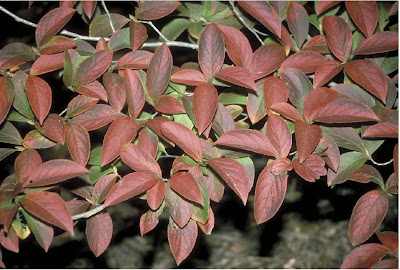Buddleia davidii syn. Buddleja davidii
Butterflybush, Summer Lilac
Type Shrub, woody plant
Hardy range 5A to 10A
Height 6' to 10' / 1.80m to 3.00m
Spread 6' to 10' / 1.80m to 3.00m
Growth rate Fast
Form Rounded
Exposure Full sun
Persistence Semi-evergreen
Bloom Color Lavender, pink, purple, red, white and yellow
Bloom Time Spring and Summer
The flowers are showy and suitable for cut flowers.
Environment
This plant tolerates some drought and occasional wetness.
This plant will grow in dry to occasionally wet soil.
Suitable soil is well-drained/loamy, sandy or clay.
The pH preference is an acidic to alkaline (less than 6.8 to more than 7.7) soil.
Leaf Color Blue and green
Fall Color No change in fall color
Landscape Uses
- Container plantings
- Border
- Standard
- Massing
- Specimen
Attributes and Features
- Pest tolerant
- Naturalizing
- Attracts birds
- Attracts butterflies
- Inconspicuous fruit
Culture Notes
A dense canopy of foliage and a generous flower display combine to make Butterflybush a popular item in many southern landscapes. The plant is probably most popular because flowers attract many different butterflies and bees. It is one of the best plants for this purpose. Flower clusters range from 6-to 24-inches long. Pollen causes some allergies in some people. The olive-green, simple, hairy leaves have serrated margins and a lanceolate shape that flutter in the slightest breeze lending a fine texture to the landscape. These plants are considered to be fire resistant plants and also resist browsing by deer.
Plants become a tangled, woody mess after a couple of years and will need to be cut back every now and then. Buddleia is grown as a herbaceous perennial as far north as hardiness zone 5.
They are deciduous in the north, semi-evergreen in the south and attract many types of butterflies, bees, and hummingbirds. They grow in partial shade but flower production is reduced. Alkaline soil appears to support adequate growth in many instances. Butterflybush performs nicely in a container provided it is placed in a full sun location. In a container, it can be trained into a multi-trunked shrub resembling a small tree, but requires daily irrigation to maintain flowering and a good appearance. Butterflybush acts like a perennial in the northern end of its hardiness range getting killed to the ground each winter. Stems with flowers cut and brought inside in a vase will last nicely for 5 to 6 days.
Plants should be located in the full sun for best flowering. You may pinch new growth as it emerges to generate more branch tips. When new shoots resulting from this pinching have two or three nodes pinch again. Continue this until you see flower buds developing and then stop pinching. You will enjoy many more flowers with this technique. This plant is considered mostly allergy free and causes little or no allergy problems in most people.
Plants serve as butterfly nectar sources.
Planting and establishing shrubs
The most common cause of young plant failure is planting too deep. Plant the root ball no deeper than it was in the nursery. In most instances, the root flare zone (point where the top-most root in the root ball originates from the trunk) should be located just above the landscape soil surface. Sometimes plants come from the nursery with soil over the root flare. If there is soil over this area, scrape it off. The planting hole should be at least twice the width of the root ball, preferably wider. In all but exceptional circumstances where the soil is very poor, there is no need to incorporate anything into the backfill soil except the loosened soil that came out of the planting hole. Never place ANY soil over the root ball. If a row or grouping of plants is to be installed, excavating or loosening the soil in the entire bed and incorporating organic matter enhances root growth and establishment rate.
Weed suppression during establishment is essential. Apply a 3-inch thick layer of mulch around the plant to help control weed growth. Keep it at least 10 inches from the trunk. If you apply it over the root ball, apply only a one or two inch layer. This allows rainwater and air to easily enter the root ball and keeps the trunk dry. Placing mulch against the trunk or applying too thick a layer above the root ball can kill the plant by oxygen starvation, death of bark, stem and root diseases, prevention of hardening off for winter, vole and other rodent damage to the trunk, keeping soil too wet, or repelling water. Regular irrigation through the first growing season after planting encourages rapid root growth, which is essential for quick plant establishment.























